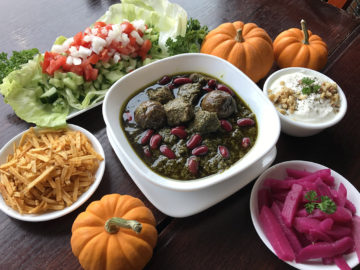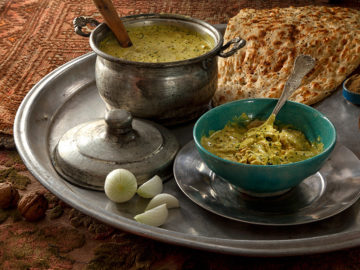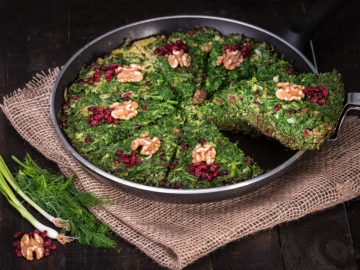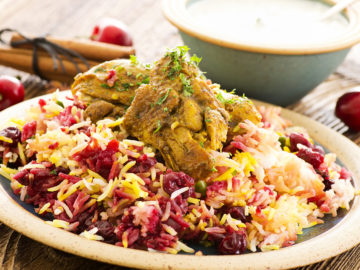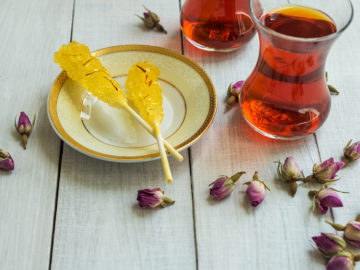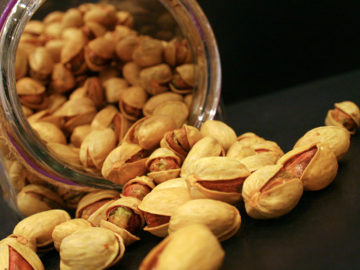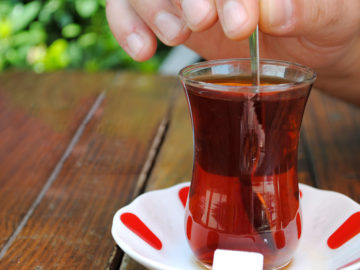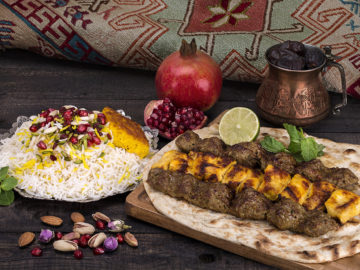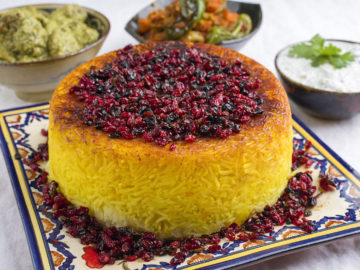
Chelo Kabab – Persian Food, Iranian Cuisine
There is not much left from the Iranian cuisine of Pre-Islamic Iran, and the ones that remain belong to the court of kings and nobles. The best examples of such remnants are the Bronze Cup of Arjan, Khusraw Ghobadan and Ridek text, and the book of Altaj. They are more about the culture and customs related to gastronomy than the recipes and materials used in it. For example, the book of Altaj is about the life of the kings and their courts, but there is a section on food that was served in the court and the customs of celebration in the Sassanid time. The book proves that at least until the fourth or fifth century after the Islam, still these customs were popular.

Tahchin – Persian Food, Iranian Cuisine
After the fall of Sassanid rulers, Arabs were acquainted with life style of Sassanid’s king. The presence of Iranian in Abbasid Caliph’s palace intensified this effect. The Persian Cuisine influenced the three most powerful dynasties of Seljuq, Ilkhanid, and Mughal, which ruled Iran since 13th century. However, the foreign terms seen in Persian Cuisine proves that the invaders had some effect on Iranian as well. The use of ghara ghooroot, which is a Turkish term used to refer to dried black curd, as a flavor for different types of Aash shows the effect of Central Asia cuisine.

Aash – Persian Food, Iranian Cuisine
Most of what we know from the Iranian Cuisine is from Safavid era. Letters of chefs and the travelogues of the travelers are the main source of our knowledge over Persian cuisine. The documents written by court chefs shows a very luxurious style of cooking with recipes of different type of Polow (rice), Kuku, Aash, Dolme, and Kufte. Travelogues from Safavid dynasty, also, provide valuable information about eating habits and cuisine of the time. In Safavid court, different types of Polow and Kebab were served in large dishes that were shared among two or three guests.

Koofteh Tabrizi – Persian Food, Iranian Cuisine
The people ate with their hands and cutlery was not popular. Sherbet (Syrup) was served in large bowl as well, usually accompanied with fragrant wooden spoons. There were no napkins and guests washed their hand in silver ewer and bowel with the help of servants. The commoners system of food and cuisine was different from the court. Unlike the courtiers, they just focused on the dinners and ate simple things for breakfast and lunch. Polow, Chicken stew, and meat were the usual food of the commoners’ dinner.
Most of what we know from the Iranian Cuisine is from Safavid era. Letters of chefs and the travelogues of the travelers are the main source of our knowledge over Persian cuisine.
The luxurious foods of court of Qajar is a tale that many travelers told on their visit of the place. Foods were served on adorned fabrics that were scattered on the land, and ate with hands. Both the courtiers and commoners of Qajar time used different form of Meat, Polow, Stew, Sherbet (syrup), Sweets and Fruits.

Tea and Gaz Candy – Persian Food, Iranian Cuisine
Persian cuisine is known for excessive use of rice, emphasis on slow and low heated style of cooking, similarity in recipes, and mild flavor. Rice is an inevitable part of Iranian cuisine; Northern provinces produce most of country’s rice. The travelers that visited Safavid and Qajar court mention the Iranian’s fascination with rice and call it the National Food of Iranian. Jakob Eduard Polak, the 19th c. traveler and writer writes that Polow, Chelo and Aash are the three main dishes of Iranians that are all made with rice. Iranian usually served the polow with stew and sometimes with vegetable, adorned with Saffron, barberry, almond, pistachio, dates, and raisin.
Persian cuisine is known for excessive use of rice, emphasis on slow and low heated style of cooking, similarity in recipes, and mild flavor.
Iranian cook food slowly, and for a long time until all ingredient are cooked well. All foods, even those that are fried, are made with slow but steady heat. In Iranian cuisine most of main dishes have a similar way of producing. First, chopped onions are fried with curcuma, meat is added, and then depending on the kind of stew other ingredients are mixed. Mild flavor is another feature of all Iranian dishes. No strong flavor or spices are used in dishes. Saffron, curcuma and pepper always accompany Persian food but only in small amount.

